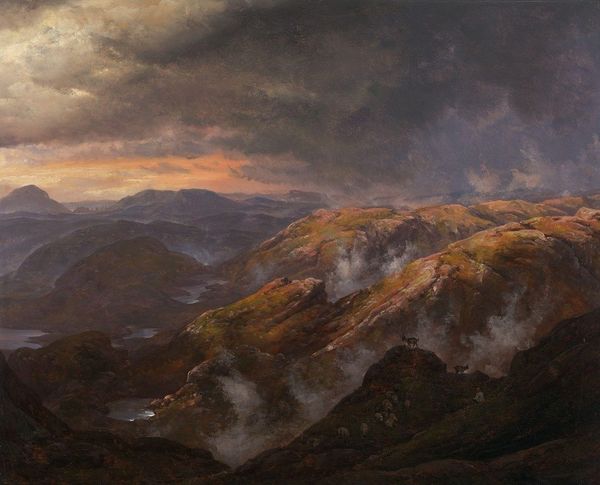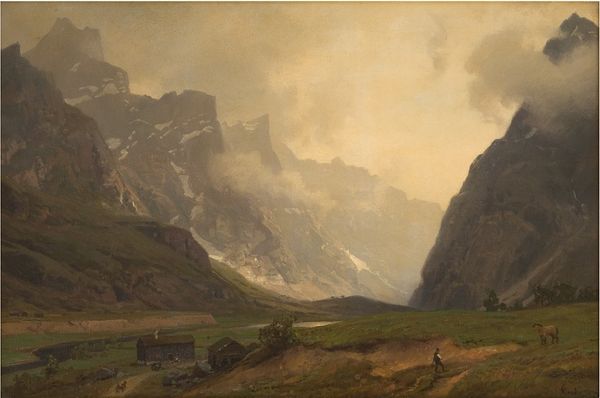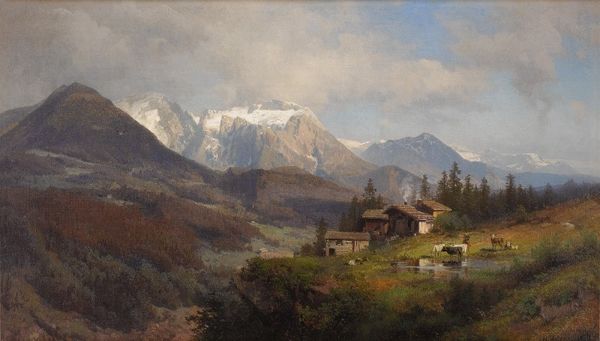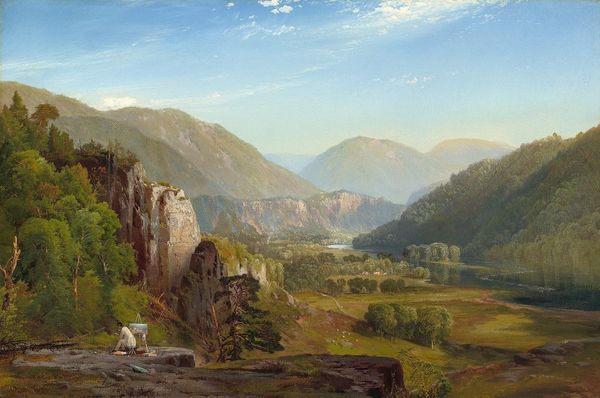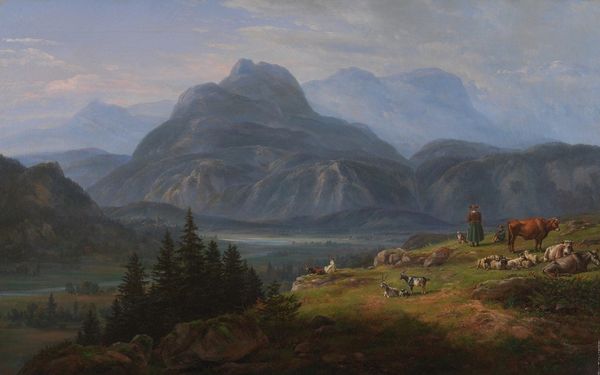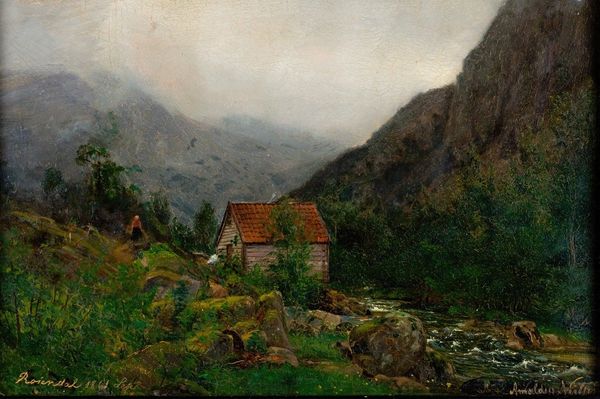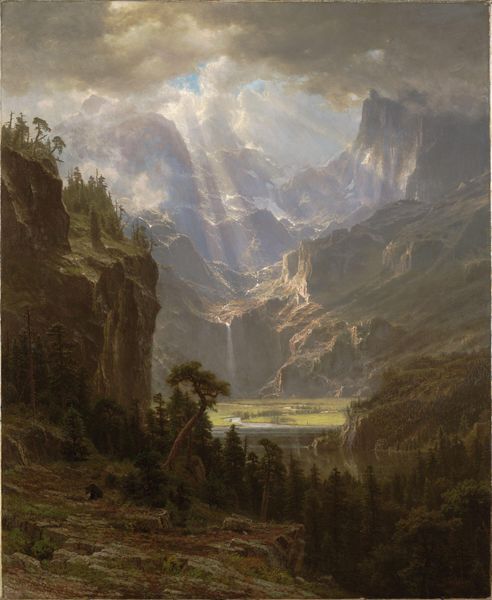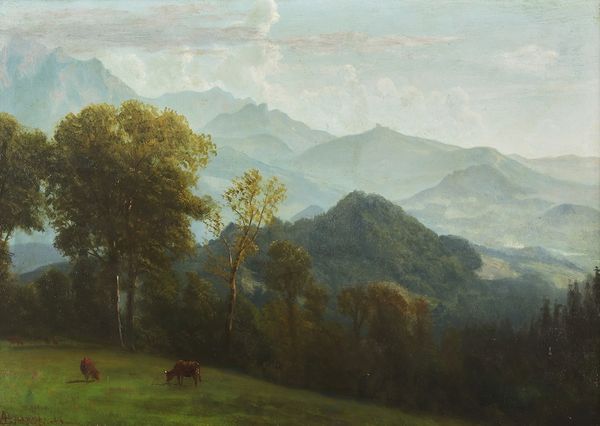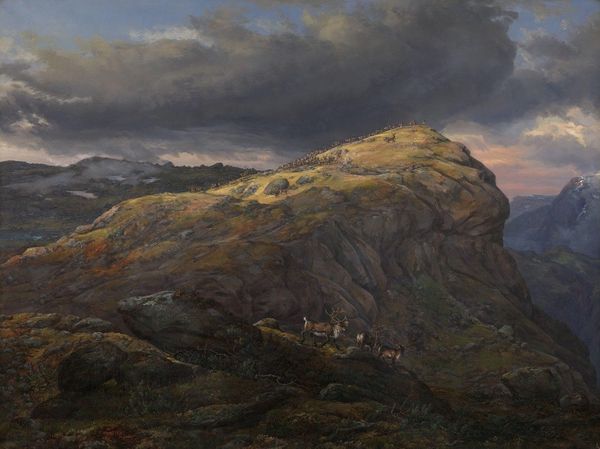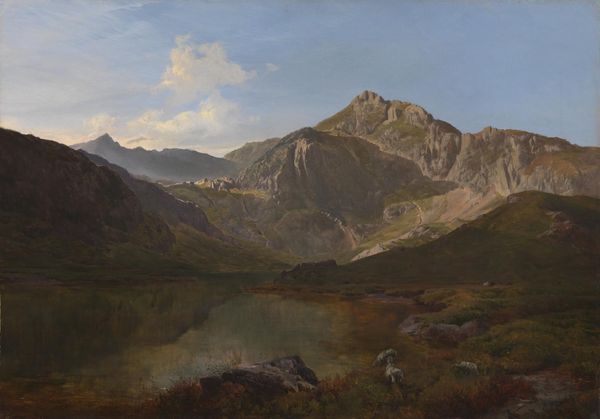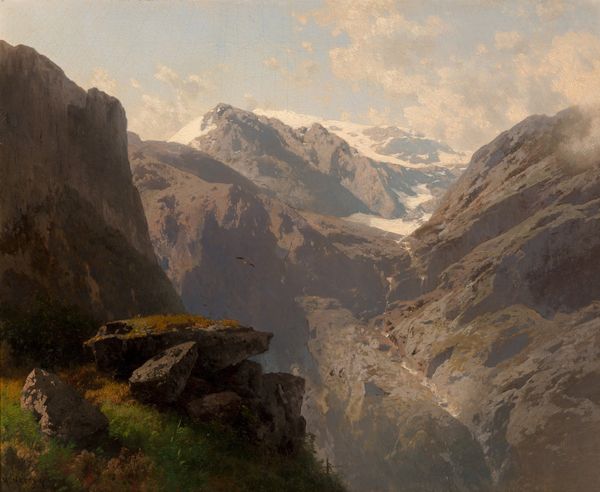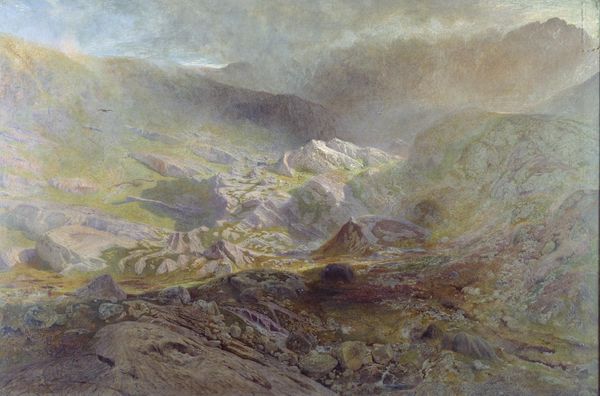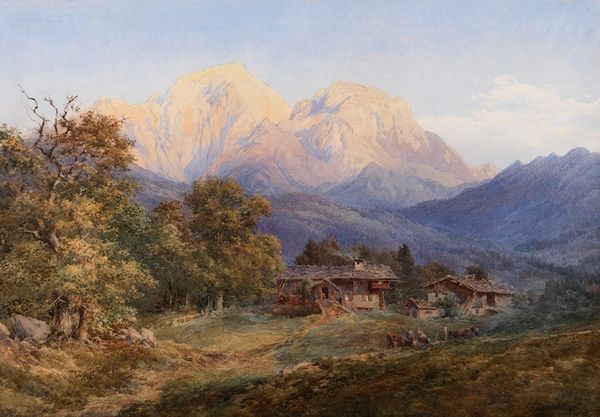
Copyright: Public Domain: Artvee
Editor: This is Oswald Achenbach’s “Blick auf die Rigi,” painted in 1864 using oil paints. There's a pervasive mist veiling a mountain and the buildings nestled in its valley. It gives the scene a romantic, almost dreamlike quality. How do you interpret this work? Curator: The mist is indeed key. Beyond just representing weather, it acts as a veil, obscuring and revealing aspects of both the landscape and the human presence within it. Consider how the Romantic era painters used similar atmospheric effects to symbolize the sublime—the awe-inspiring and potentially overwhelming power of nature. What symbols resonate with you? Editor: Well, the mountain itself feels symbolic, maybe representing something monumental and enduring, like national identity, given this painting’s origin. And then the small figures seem to be dwarfed by the landscape. Curator: Exactly! They're pilgrims in a sacred landscape. Do you think about what Rigi might have meant to those traveling towards it? There is cultural memory embedded into mountains in Switzerland. Also note the sunlight breaking through the clouds. Light has consistently been a symbol for the divine. Consider these paintings within the context of the burgeoning tourism industry of the time – how might this image both reflect and shape the experience of travel and encountering the sublime? Editor: I hadn’t thought about the burgeoning tourism playing a part in how the sublime is portrayed. Now, looking at the hikers again, I see that Achenbach positions the divine in relationship with everyday experience. Curator: Precisely! And how those experiences shape collective memory and understanding of place. Visual symbols help us grasp not just physical realities, but also emotional and cultural landscapes.
Comments
No comments
Be the first to comment and join the conversation on the ultimate creative platform.
